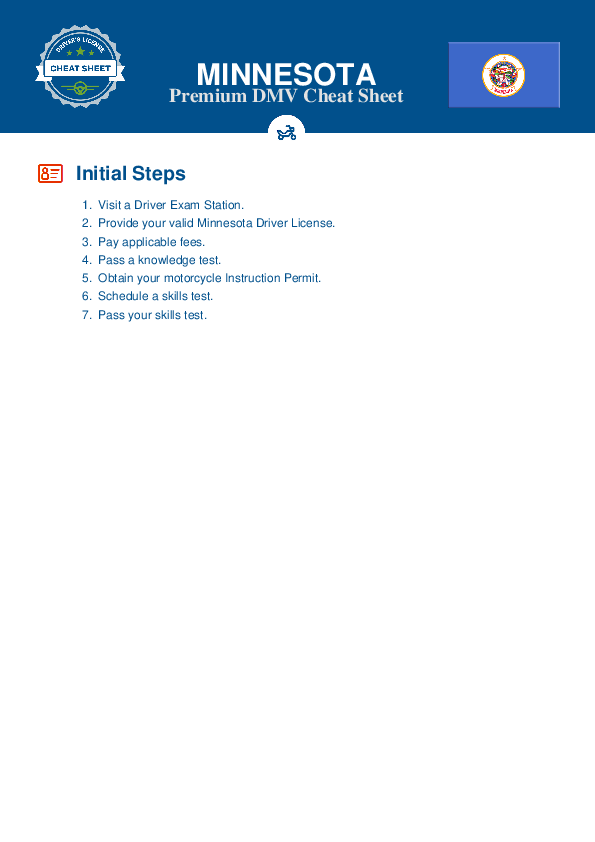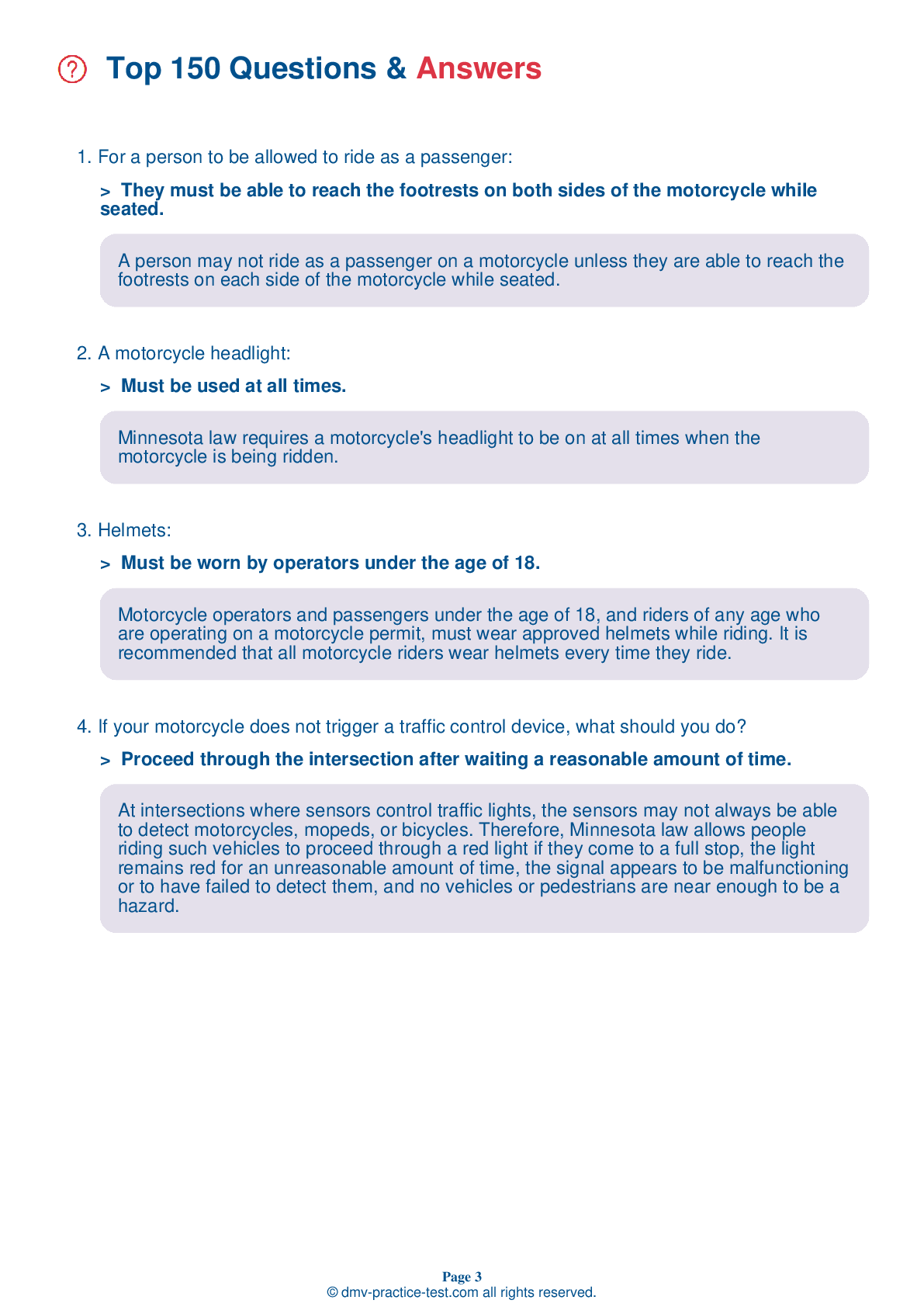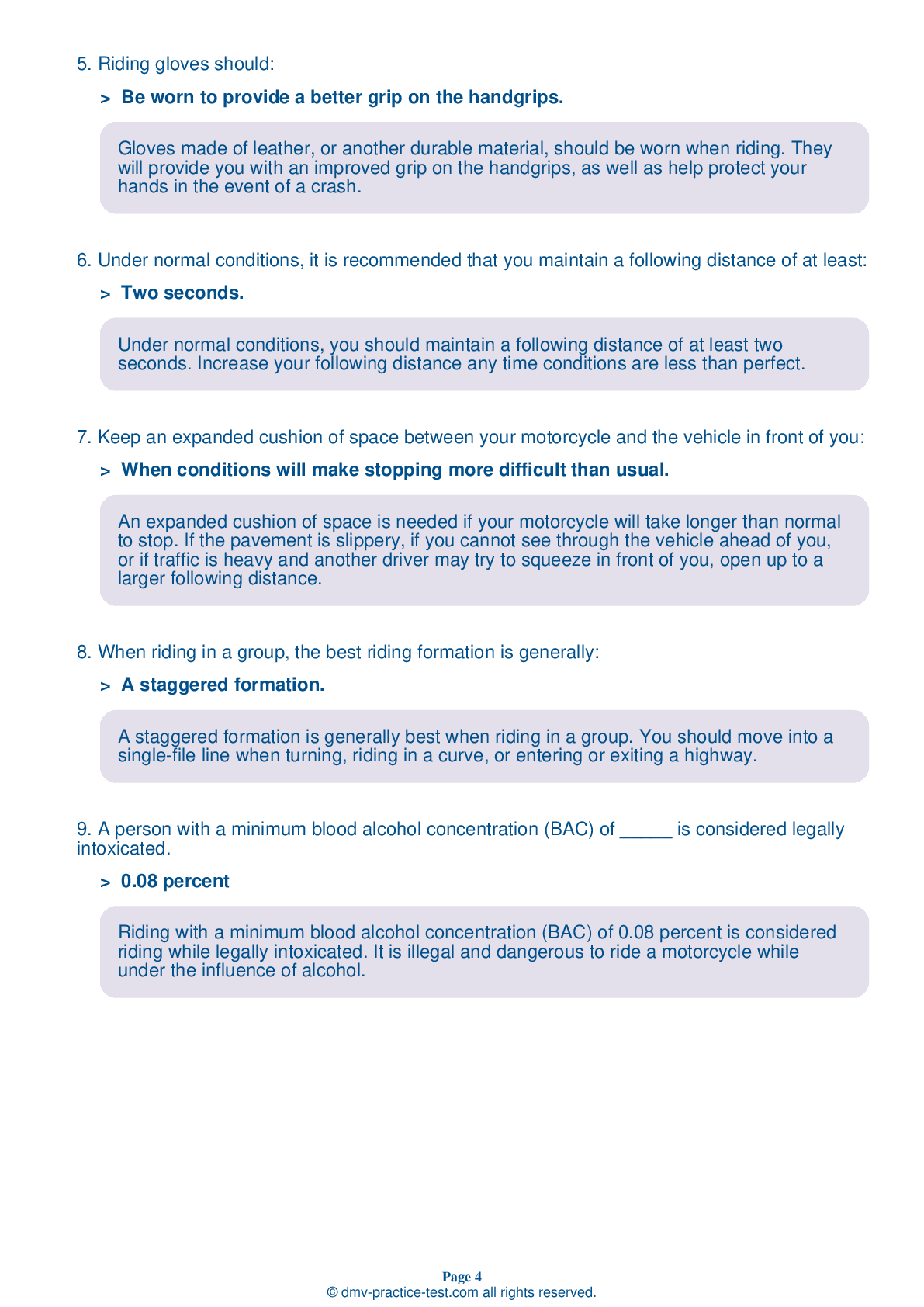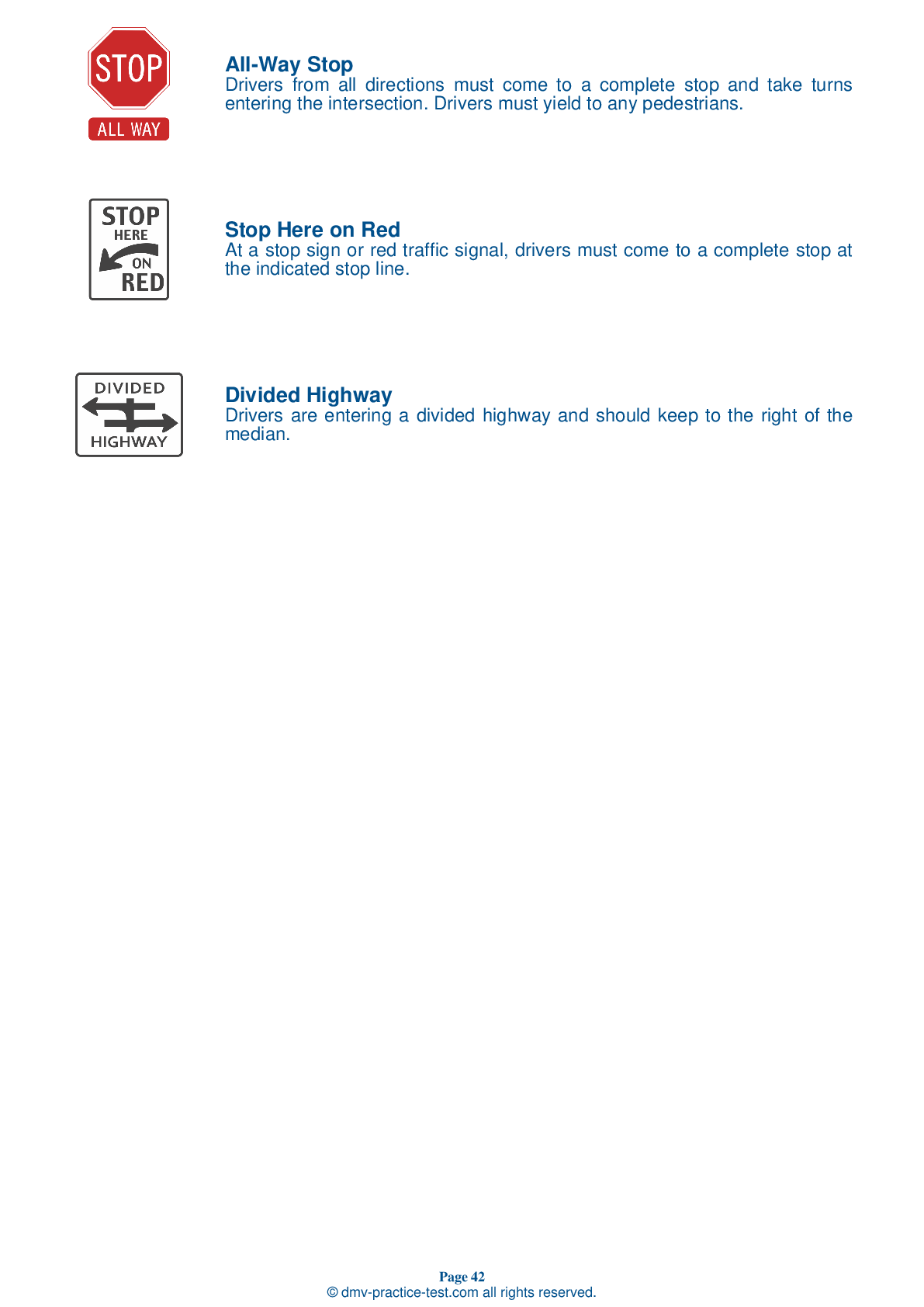Motorcycle Test | License MN 2025 | FREE Online Practice! #15 Page 4 of 5
Take this FREE motorcycle test (license in MN 2025) to check your knowledge of the road rules. To improve your results, download a motorcycle handbook online, study theory, and practice for free on our website. Still worried about how to get a motorcycle license in Minnesota in 2025? Check our website for more sample tests, train as much as possible, and boost your grades!
25 . Which of the following is not a way to prevent a friend from driving while intoxicated?
To prevent someone from drinking and driving, it is a good idea to arrange an alternative way for them to get home, involve them in other activities to slow the pace of their drinking, use any available excuse to keep them from leaving, and recruit friends to help apply peer pressure.
26 . When you ride a motorcycle, you should:
When turning, look through the turn to where you want to go by turning only your head. Keep your knees against the gas tank to help maintain your balance while turning. Your arms should be slightly bent any time you are holding the handgrips.
27 . When riding at night, you should:
Always be flexible about your lane position, especially when riding at night. Be especially careful to employ safe riding strategies when riding under conditions that are less than ideal.
28 . Your lane position should help you:
A properly chosen lane position should protect your lane from other drivers while communicating your intentions to them.
29 . When selecting a helmet, make sure it is all of the following, except:
You should select a helmet that meets U.S. Department of Transportation and state standards; fits snugly all the way around; and has no obvious defects, such as cracks, loose padding, or frayed straps.
30 . To swerve correctly:
To execute a swerve, press the handgrip on the side of your desired turn. Press on the opposite handgrip to return to your original direction after you are clear of the hazard.
31 . Usually, a good way to handle a tailgater is to:
Usually, the best way to handle a tailgater is to get them in front of you. If you can do so safely, change lanes and let them pass. Speeding up may only increase the danger by encouraging them to follow you at a faster speed.
32 . What does this signal mean?
Signals are an important part of communication when riding in groups. When the lead rider's right leg is extended, it means there is a hazard in the roadway on their right side.
See the exact questions that will be on the 2025 Minnesota DMV exam.
99.2% of people who use the cheat sheet pass the FIRST TIME
Jeneen was tired of paying $5/gallon. She got herself a scooter that required the motorcycle license. She studyed the motorcycle test cheat sheet and passed her test the next day!
Christopher tells us how he knew nothing prior to obtaining the motorcycle study guide, and he only got one question wrong because he clicked on the wrong answer by mistake.



